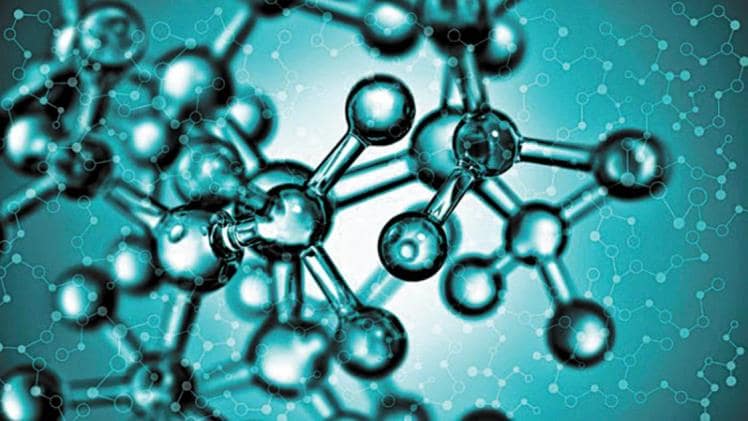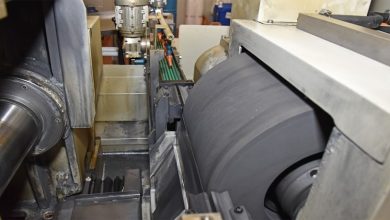What are chemical thermodynamics?

Within the boundaries of the rules of thermodynamics, chemical thermodynamics proves to be the study of the interrelationship of heat and work with chemical processes or physical changes of state. Chemical thermodynamics entails not only laboratory observations of various thermodynamic parameters, but also the use of mathematical approaches to investigate chemical issues and process spontaneity.
The first two rules of thermodynamics form the foundation of chemical thermodynamics. Four equations known as the “basic equations of Gibbs” may be obtained from the first and second laws of thermodynamics. Using very easy mathematics, a number of equations relating the thermodynamic characteristics of the thermodynamic system may be obtained from these four. The mathematical underpinning of chemical thermodynamics is outlined here.
In his Mechanical Theory of Heat, published in 1865, German scientist Rudolf Clausius proposed that the concepts of thermochemistry, such as the heat evolved in combustion processes, could be applied to the laws of thermodynamics.
Willard Gibbs, an American mathematical physicist, wrote a series of three articles between 1873 and 1876, the most notable of which being On the Equilibrium of Heterogeneous Substances, based on Clausius’ work. Gibbs demonstrated how the first two principles of thermodynamics might be assessed visually and analytically to identify both the thermodynamic equilibrium and the inclinations of chemical processes to occur or continue in these works. From the ideas discovered by others, such as Clausius and Sadi Carnot, Gibbs’ collection of articles gave the first coherent body of thermodynamic theorems.
Two significant papers in the early twentieth century effectively adapted Gibbs’ concepts to chemical processes, laying the groundwork for the field of chemical thermodynamics. The first was Gilbert N. Lewis and Merle Randall’s textbook Thermodynamics and the Free Energy of Chemical Substances, published in 1923. In the English-speaking world, this book is credited with replacing the term chemical affinity with the word free energy. E. A. Guggenheim’s Modern Thermodynamics by the Methods of Willard Gibbs, published in 1933, was the second. Because of the enormous contribution of these two volumes in integrating the application of thermodynamics to chemistry, Lewis, Randall, and Guggenheim are regarded the pioneers of contemporary chemical thermodynamics.
Chemical energy is the amount of energy generated when chemical compounds undergo a chemical reaction. Breaking and re-making chemical bonds requires energy release or absorption, most commonly in the form of heat, which can be absorbed or emitted by the chemical system.
The difference between the energy content of the products and the reactants is equivalent to the energy released as a result of a reaction between chemical compounds. The change in internal energy of a chemical system is the name for this energy shift. It may be estimated using the internal energy of formation of the reactant molecules as a function of the bond energies of the molecules under consideration and the internal energy of creation of the product molecules. If measured under circumstances of constant volume (at STP), as in a closed rigid container such as a bomb calorimeter, the change in internal energy equals the heat change. The measured heat is frequently not equal to the internal energy change at constant pressure, as in reactions in vessels exposed to the atmosphere, because pressure-volume work also releases or absorbs energy. (The enthalpy change is the heat change at constant pressure; in this example, the commonly tabulated enthalpies of formation are employed.)
The heat of combustion, which is the energy (mainly of O2[4]) produced as a result of a combustion process and is of relevance in the study of fuels, is a similar phrase. Food is comparable to hydrocarbon and carbohydrate fuels in that it releases similar amounts of energy when oxidized (albeit in a different way than a hydrocarbon fuel – see food energy).
Chemical potential energy is referred to as chemical potential in chemical thermodynamics, and the Gibbs-Duhem equation is occasionally utilized.
Important Question:
Q: For the following process, H_(2)(g)rarr2H(g). It absorbs 438kJmol^(-1) . Thus,
- A) change in internal energy of the system is 219KJmol−1
- B) internal energy of the system is 438KJmol−1
- C) change in internal energy if 438KJmol−1
- D) internal energy of the system is 219KJmol−1
In general, systems that are addressed using traditional chemical thermodynamics are either at or near equilibrium. The thermodynamic treatment of open systems that are far from equilibrium was established by Ilya Prigogine. He has uncovered phenomena and structures of wholly new and unexpected sorts as a result of this. In a wide range of domains, his generalised, nonlinear, and irreversible thermodynamics has found unexpected applications.
Non-equilibrium thermodynamics has been used to explain how disordered things, such as biological systems, may become organized. Even if Onsager’s relations are used, conventional thermodynamic concepts of equilibrium still reveal that linear systems approaching equilibrium invariably develop into states of disorder that are stable to perturbations and cannot explain the formation of ordered structures.All Movies HD Download free from here EPS Coin
These systems are named dissipative systems by Prigogine because they are produced and sustained by dissipative processes that occur as a result of the flow of energy between the system and its surroundings, and they vanish if that exchange stops. They may be described as living in synergy with their surroundings.
Prigogine’s approach for studying the stability of dissipative structures to disturbances has a wide range of applications. It allows researchers to investigate a wide range of issues, including city traffic congestion, insect community stability, the emergence of organized biological structures, and cancer cell proliferation, to name a few.





